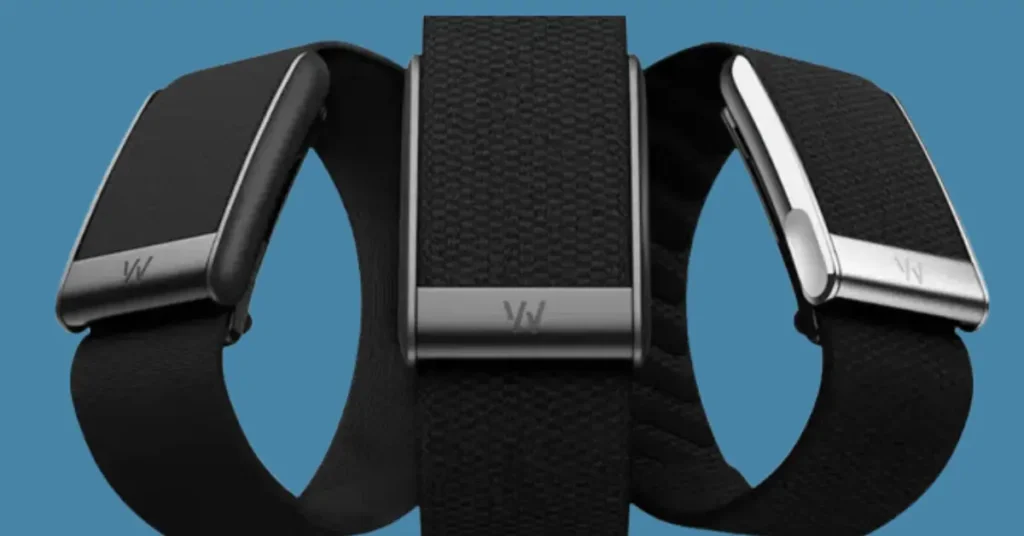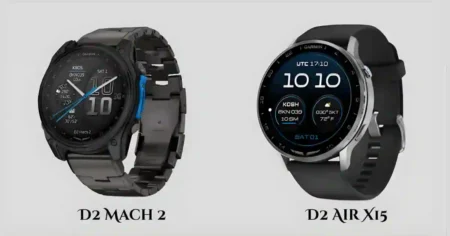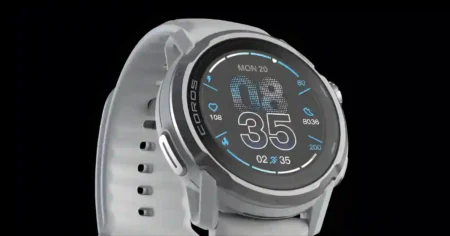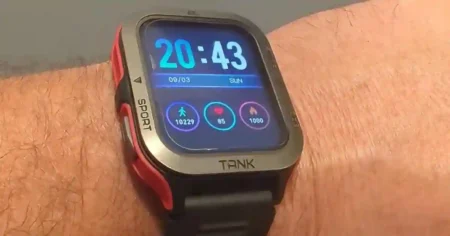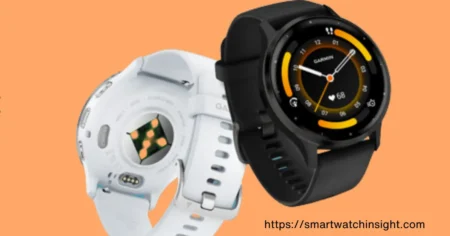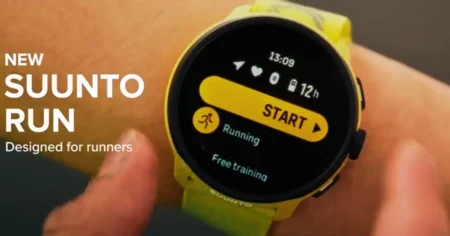WHOOP’s newest tracker, the WHOOP 5.0, is a major update from the 4.0, with a slimmer design and a host of new health features. It’s about 7% smaller and lighter than before, yet packs more power under the hood.
WHOOP claims a 14-day battery life on the band itself, plus an optional wireless “PowerPack” that holds up to 30 more days of charge. The PowerPack is even waterproof and shows battery status via Bluetooth, so you can stay charged on the go.
All around, WHOOP 5.0 is meant to be sleeker (no big surprise there) and more reliable, with a 60% faster processor and sensors that sample your biometrics 26 times per second.
WHOOP 5.0 with a new leather strap – the band is now slimmer and more stylish than before.
WHOOP 5.0 Review: What’s new?
The new strap system is a big change, too. WHOOP 5.0 comes with more band and strap options (including leather and knit “Luxe” styles), but the clip and clasp have been redesigned. That means old WHOOP 4.0 bands won’t fit the 5.0 (and the old charger won’t work either).
This shift lets WHOOP offer a variety of looks (even a new “WHOOP Body” shirt you can tuck the tracker into for formal wear), but it does mean existing users must get new bands. On the plus side, the device remains screen-free and completely waterproof, keeping your data confined to the WHOOP app without any on-device display.
Inside the small tracker, the sensors are also upgraded. WHOOP 5.0 has a better accelerometer and gyroscope than before, so it can more accurately auto-detect and classify your workouts. (For example, it should do a better job recognizing when you start running versus lifting weights.)
New haptic feedback and an improved step-counting algorithm round out the hardware tweaks. In short, 5.0 feels like a refined version of the same wearable platform: it’s still a lightweight fitness band without a screen, but with longer battery life and smarter sensors than 4.0.
Also See :- WHOOP 5.0 & MG Bands Are Here: Discover the Exciting New Features
New Membership Tiers: WHOOP One, Peak, and Life
Alongside the hardware, WHOOP has overhauled its subscription model. Gone is the single-plan system of the past; now there are three tiers of membership, each with different features:
- WHOOP One – Basic tracking: Includes the WHOOP 5.0 band and app access for $199/year. You get the core strain, sleep, recovery, and basic health metrics, but no advanced insights. One member is charged with the included cable (no wireless pack). This tier is aimed at newcomers or those who just want the basics.
- WHOOP Peak – Wellness and longevity focus: $239/year. Includes everything in One Plus Healthspan (Pace of Aging) and the new Stress Monitor, which gives you insights into your long-term health trends and recovery. Peak members also get the wireless PowerPack charger. If you’re interested in biohacking, longevity, or understanding your “Whoop Age,” Peak is likely the sweet spot. (Current WHOOP users will be auto-upgraded to Peak by default.)
- WHOOP Life – Medical-grade monitoring: $359/year. This top tier includes all Peak features and adds blood pressure monitoring and an on-demand ECG heart screener (via the Whoop MG hardware). Life members get the PowerPack charger and can generate FDA-cleared ECG reports to check for atrial fibrillation, and the band will passively alert you to irregular heart rhythms. In short, Life is for those who want the fullest picture of health – essentially a wearable with medical-style insights.
These tiers change the WHOOP experience significantly. Under One, you get the basic WHOOP app and band, but skip the new longevity and medical features.
Peak unlocks the brand-new Healthspan/Pace of Aging tools, which calculate your “physiological Whoop Age” from metrics like HRV, VO2 max, sleep consistency, etc., and show how your habits affect aging.
Life goes further by giving you blood pressure trend estimates (after an initial calibration with a cuff) and on-demand ECG readings to screen for arrhythmias.
Economically, One is the entry-level choice, Peak is mid-range, and Life is quite expensive. Reviews note that for most people, Peak (~$239/yr) will be the default choice. It adds the most compelling new features without as steep a jump in price.
One makes WHOOP more affordable for beginners, while Life is aimed at users obsessed with their health data or needing medical-style metrics.
Also See:- What Is WHOOP Age & How It Differs From Pace of Aging.
How the Tiers Affect Your Experience
Each plan comes with a noticeably different experience in the app. Under One, you see your usual Strain, Sleep, and Recovery scores, but you won’t have access to the new healthspan metrics or advanced stress tracking. The band and app will function much as the old WHOOP 4.0 did.
With Peak, the app adds the Daily Outlook AI coach and the Healthspan/Pace of Aging dashboard. You’ll get a “Whoop Age” result and personalized tips on slowing your aging trajectory, plus a sophisticated stress assessment.
In other words, Peak gives you more insights about why your body is in the state it’s in. Most avid WHOOP fans and biohackers will likely find this extra data valuable.
The Life tier unlocks the full suite: ECG heart scans and blood pressure monitoring. Now your WHOOP can, on-demand, record a single-lead ECG and check for atrial fibrillation. It will also passively watch for any high, low, or irregular heart rhythms.
Blood pressure insights come nightly once you’ve done a one-time calibration with a standard cuff. These features are geared toward early health detection – for example, helping spot hypertension or arrhythmias early. It’s worth noting that ECG readings are on-demand, not continuous.
You actively trigger a reading in the app when you want a check-up, and WHOOP then generates a PDF report. After calibration, blood pressure is tracked automatically every night as a trend rather than a single reading.
In summary, each tier is like a different health “package.”
One is basic fitness tracking. Peak is for health optimization and longevity enthusiasts. Life is for users who want medical-style monitoring. As Wearable observes, most users will probably stick with Peak, while those on tight budgets may try One, and those craving maximal data might splurge on Life.
WHOOP 5.0 vs. 4.0: Upgrade Path and Compatibility
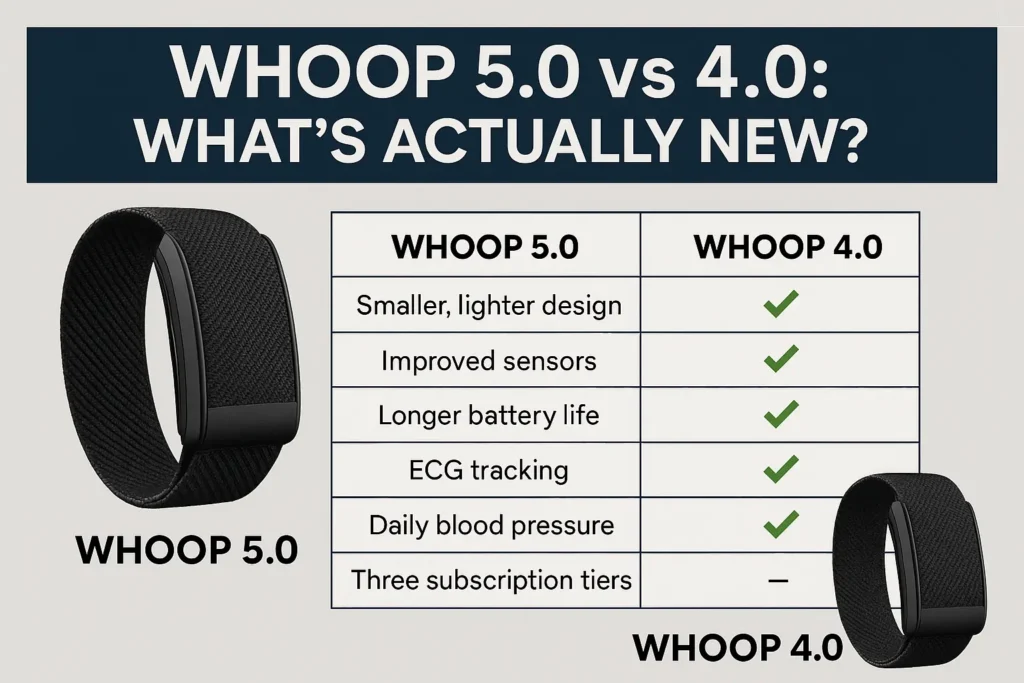
Upgrading from WHOOP 4.0 to 5.0 is a bit of a commitment. First, by default, any current 4.0 subscriber will be moved to the Peak tier.
To actually get the new 5.0 band (or the MG strap for Life members), you must re-commit to at least 12 more months of membership or pay a fee.
In other words, WHOOP isn’t offering a free upgrade kit – new hardware comes with a new contract.
Physically, WHOOP 5.0 offers a “size reduction that’s quite subtle”. It feels about 7% smaller, though on the wrist, it still looks very much like a WHOOP band.
The biggest tangible improvements over 4.0 are the battery life (5.0 easily doubles or triples 4.0’s runtime to 14 days) and the new health features. Remember, however, that your old 4.0 straps and charging puck will not work with 5.0.
You’ll need the new strap and either the wireless PowerPack (for Peak/Life) or a new cable (for One).
For most users, upgrading means deciding if the new features justify the cost. If you’re already a WHOOP fan, 5.0 is an upgrade in almost every respect – better battery, new longevity tools, and optional medical features. But it’s also pricier overall once you factor in the membership price.
ECG and Blood Pressure: Medical Insights on WHOOP 5.0
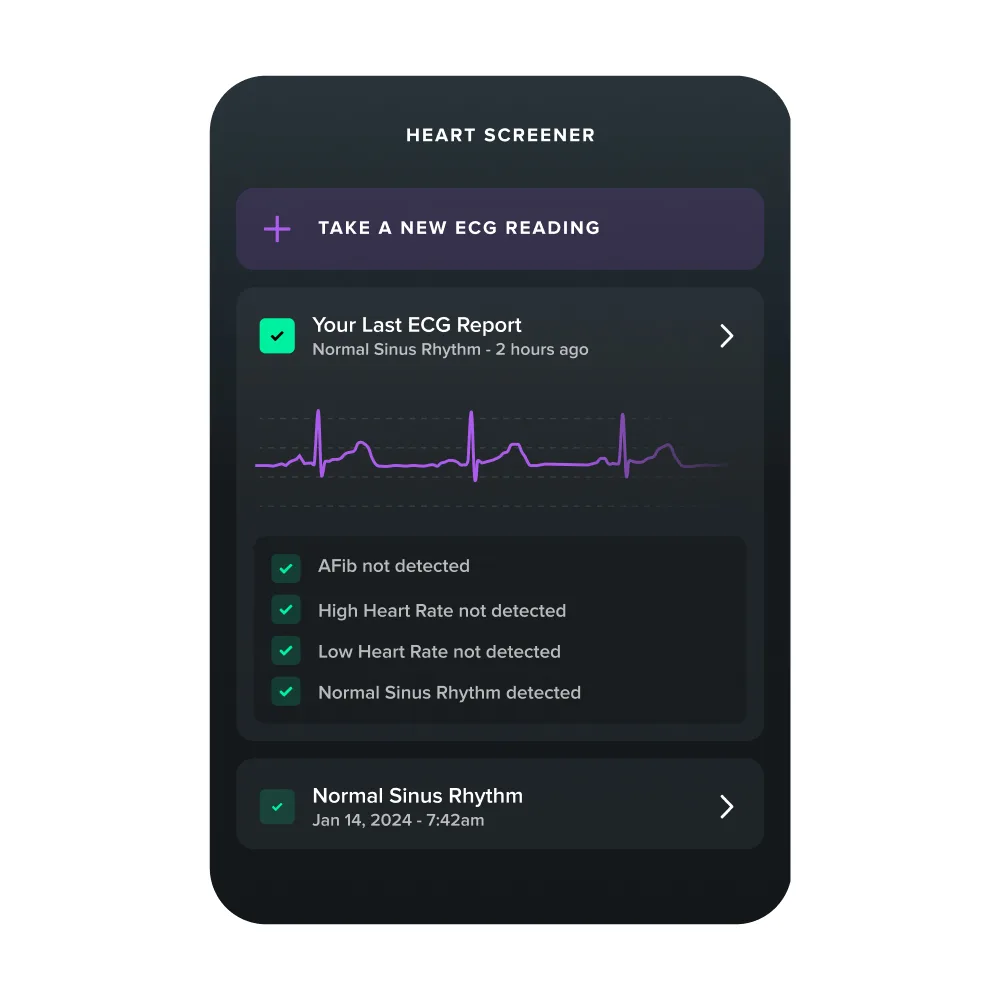
One of the flashiest additions is the Whoop MG strap hardware used by Life members to enable ECG and blood pressure tracking. Here’s how they work:
ECG (Heart Screener): You initiate an ECG in the app whenever you like. The MG strap will then record a single-lead electrocardiogram. It’s FDA-cleared for detecting atrial fibrillation, and the app compiles it into a PDF report.
The strap also passively watches your heart rate continuously and will notify you if it detects a sustained irregular rhythm. (The quiz-style setup in WHOOP makes it clear this isn’t meant for people with known heart issues – it’s a consumer screening tool, not a medical device for patients with pacemakers, for example.) Bottom line: ECG is on-demand only – WHOOP won’t record 24/7 ECG by itself.
Blood Pressure Trends: After you calibrate with three cuff readings (either at home or the doctor’s office), WHOOP will estimate your blood pressure every night using its sensors. It won’t give you a new systolic/diastolic number every minute, but it will show you how your blood pressure is trending over time.
These are non-FDA “wellness” readings – think of them like a nightly summary rather than a diagnostic device. WHOOP markets this as “daily blood pressure insights,” and it’s automatic once set up.
These features really set WHOOP apart from other fitness trackers. However, remember: they require the top-tier Life membership. If you choose One or Peak, you won’t see the ECG or blood pressure screens at all.
No Built-In GPS: What Fitness Enthusiasts Need to Know
It’s worth pointing out what WHOOP still doesn’t do: onboard GPS. The WHOOP 5.0, like its predecessors, has no built-in GPS receiver.
This means it won’t independently track your route or speed when you run or bike. (WHOOP can infer some activity data and will use your phone’s GPS if you choose to connect it to a running app, but it won’t record a map on its own.)
In practice, WHOOP is designed more as a holistic health monitor than a sports watch. As one reviewer notes, “it’s not ideal for runners who would still want a Garmin or Apple Watch”.
WHOOP excels at strain, sleep, and recovery analysis, but if you’re looking for mile-by-mile pace, elevation, or step-by-step navigation, you’d still pair it with a GPS-capable device.
In fact, many users wear WHOOP and an Apple Watch or Garmin side-by-side – WHOOP for the biometrics and the other watch for running data. This is a conscious trade-off in WHOOP’s design.
If tracking outdoor workouts is a must for you, keep in mind that WHOOP on its own won’t cover it.
Which Plan Should You Pick?
Deciding between WHOOP One, Peak, and Life comes down to your goals and budget:
- Choose WHOOP One if you just want a year of core WHOOP tracking at the lowest price. It’s ideal for first-time users or those primarily interested in basic fitness/recovery metrics without the extra bells and whistles. (Note: you’ll charge with a cable, not the wireless pack.)
- Choose WHOOP Peak if you’re intrigued by the healthspan and longevity features. Peak is likely where the majority will land, since it unlocks the new Pace of Aging and stress insights without the very high price tag. It’s great if you want more actionable data about your overall health, but don’t necessarily need an ECG or blood pressure yet.
- Choose WHOOP Life if you have specific health concerns or want maximum data. Life is aimed at users who want medical-grade monitoring in their wearable. For example, if you have a family history of high blood pressure or heart issues and want continuous watchfulness (and you don’t mind paying $359/year), Life could be worth it. Otherwise, it may be overkill for casual fitness tracking.
In short, Peak hits the sweet spot for most fitness and wellness enthusiasts. One lowers the cost for newcomers, and Life is for those needing the highest level of health insight.
Comparison of WHOOP 5.0 Subscription Tiers
| Feature / Tier | WHOOP One | WHOOP Peak | WHOOP Life (MG Strap) |
|---|---|---|---|
| Annual Price | $199 | $239 | $359 |
| Battery Charger | Wired cable | Wireless PowerPack | Wireless PowerPack |
| Healthspan (“Whoop Age”) | No | Yes | Yes |
| Stress Monitor | No | Yes | Yes |
| Blood Pressure Insights | No | No | Yes (automatic nightly trends) |
| ECG / Arrhythmia Alerts | No | No | Yes (on-demand ECG & irregular HR) |
| Women’s Hormonal Insights | Yes | Yes | Yes |
Conclusion
The WHOOP 5.0 represents a big leap forward for the WHOOP ecosystem. Hardware-wise, it’s smaller, more comfortable, and boasts a battery that can last about 14 days on a charge – a boon for anyone who hated charging the 4.0 every few days. Its new chargers and straps make it more stylish and versatile, even if it means replacing older accessories.
On the software side, the new membership tiers reframe what WHOOP offers. If you’ve ever wanted to know your “biological age” or keep tabs on your blood pressure without a cuff, 5.0 (with the right plan) gives you tools for that.
For most fitness and health-minded users, the Peak tier will deliver the best balance of features (healthspan metrics and stress tracking) for a reasonable price.
If you’re purely focused on recovery and strain, the One tier still covers the fundamentals. And if you need the cutting edge – an on-demand ECG and nightly BP trends – then Life with the MG strap is there, albeit at a premium cost.
One thing to remember: WHOOP 5.0 still isn’t a traditional sports watch. There’s no screen and no built-in GPS, so it can’t replace your running watch or phone for workout maps. Instead, it’s very much about the big picture of your health – sleep, recovery, stress, and longevity.
If that aligns with your goals, WHOOP 5.0 has a lot to offer. Just pick the plan that matches how deep you want to go into your data, and prepare to see your age in a whole new light.

